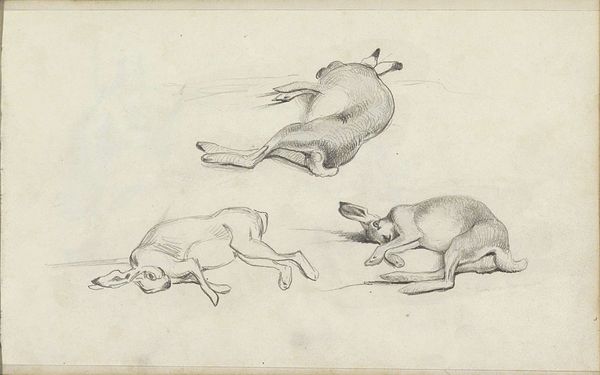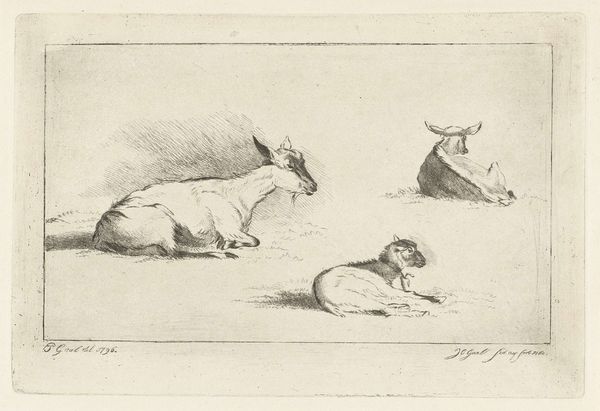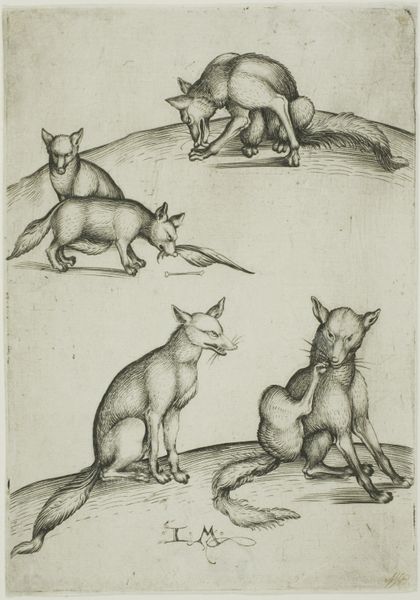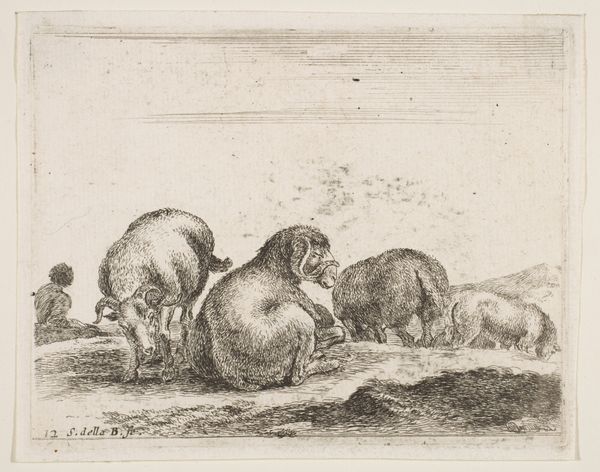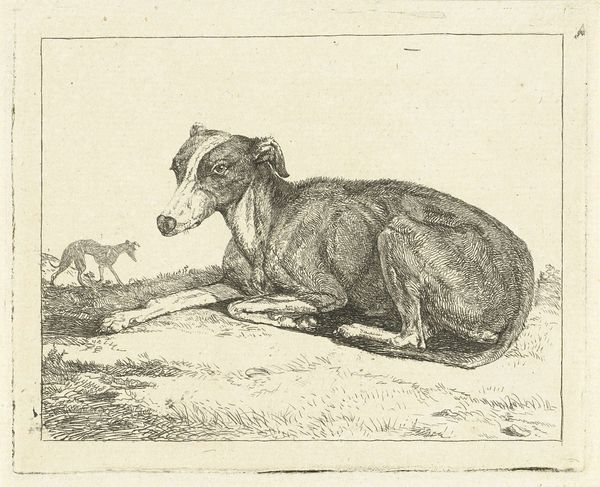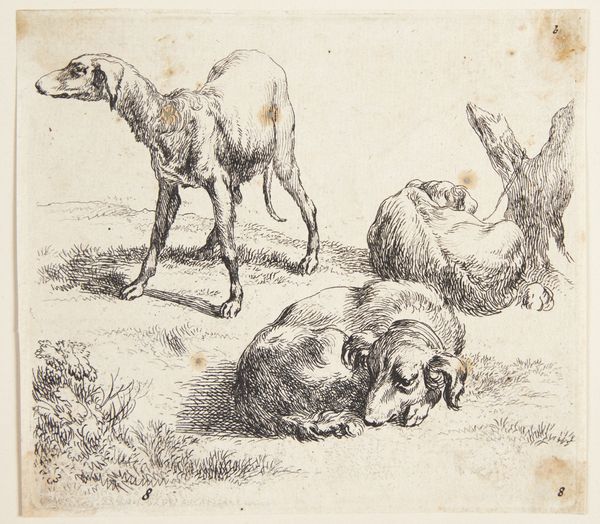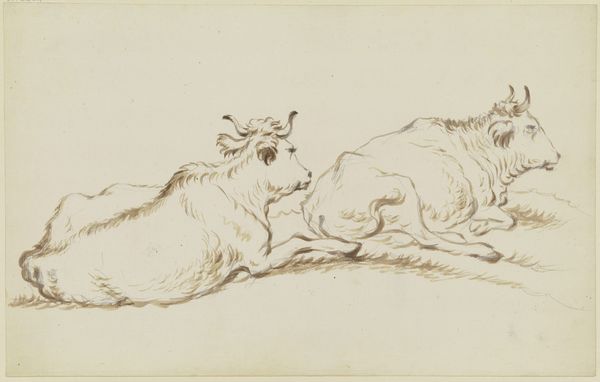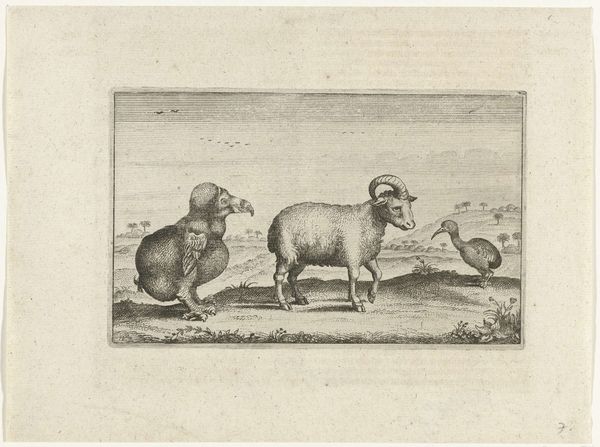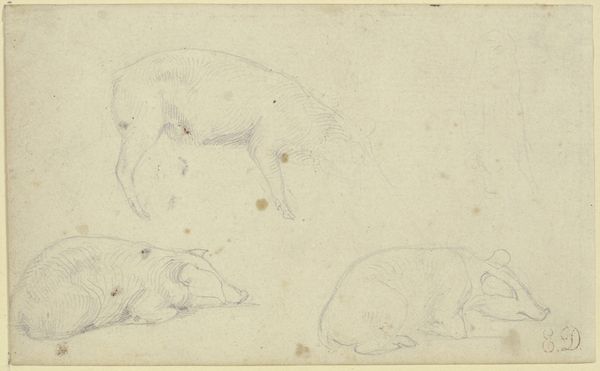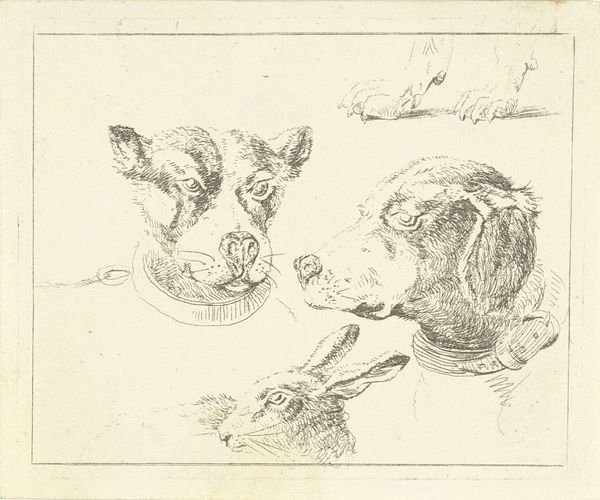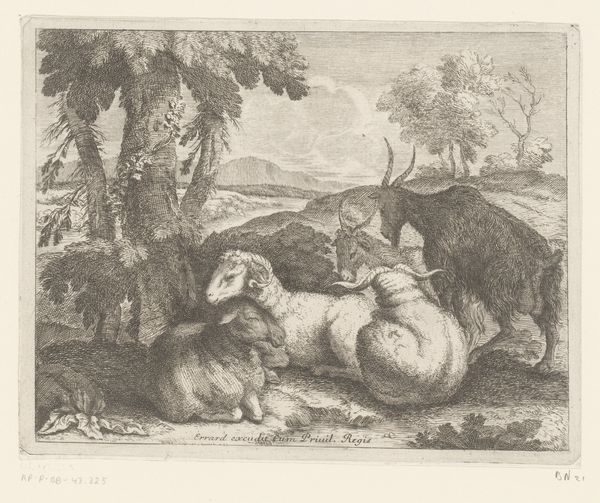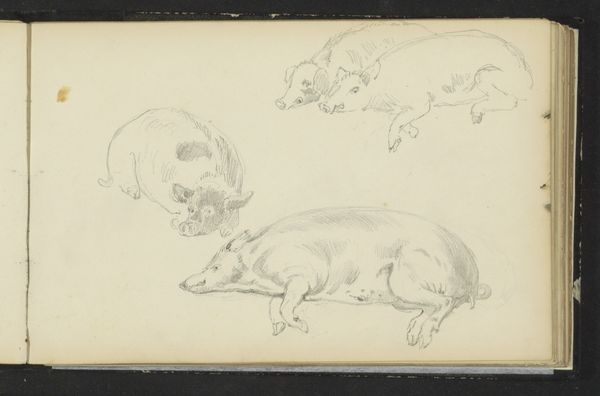
drawing, paper, pencil
#
pencil drawn
#
drawing
#
toned paper
#
pencil sketch
#
paper
#
pencil
#
northern-renaissance
#
realism
Copyright: Rijks Museum: Open Domain
Curator: We’re looking at “Three Dead Hares,” a pencil drawing by Johannes Tavenraat from 1843 or 1844. It’s part of the Rijksmuseum's collection. Editor: My gut reaction? A melancholy symphony in grey tones. They look almost peaceful, don't they, splayed out like that? A little unsettling too, I must admit. Like a backstage glimpse into some macabre performance. Curator: Tavenraat clearly engages with the traditions of realism, evident in his careful study of the hares’ forms and poses. This artwork also taps into the socio-political currents of its time, raising questions about humanity’s relationship with the animal kingdom, and ideas around hunting and dominance, prevalent themes during the period of colonial expansion. Editor: Absolutely, that historical context is vital. But even divorced from that, there's a primal rawness. I’m really taken by the varying orientations – the way one hare is presented belly-up, almost playfully, while another is more grounded. And those ears! They seem to retain a sensitivity, an echo of life, don’t you think? Curator: This aligns with the practice of the 'nature morte' which historically often symbolizes temporality and human control over nature, reminding us of the fleeting nature of existence itself. Considering the political landscape, these artistic choices reflect broader societal dynamics of control and representation. Editor: And beautifully executed, wouldn't you agree? Such delicacy in the shading, considering it's just pencil on toned paper. It makes you wonder what Tavenraat’s thoughts were while drawing. Did he feel remorse, admiration, or simple detachment? The hares almost tell a little story just by being present, right? Curator: It's these juxtapositions that enable a richer and wider interpretation. This piece invites us to critically engage with both its formal qualities and embedded socio-political messages. The pencil and paper become agents of a more intricate discourse. Editor: Makes you think, doesn't it? I am left appreciating both the beautiful execution of the piece, while recognizing that under the surface, it speaks volumes. Curator: Precisely. This piece, seemingly simple, offers layers of insights into 19th-century thought and artistic practices.
Comments
No comments
Be the first to comment and join the conversation on the ultimate creative platform.
